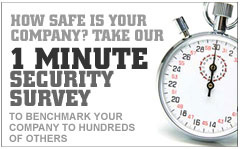1. Myth: “Crime doesn’t pay”
Realty: Criminal activity is a multi-billion dollar problem today for American companies, with very few of the perpetrators being apprehended. Those who are caught oftentimes receive light criminal sentences. Consequently, dishonest employees and professional thieves find business crime extremely lucrative.
2. Myth: “Our security must be good because we’ve never had a major loss”
Realty: Many companies that never incurred a prior loss were subsequently victimized for six and even seven figures. Never confuse being lucky with being invulnerable. At some point, your luck may run out.
3. Myth: “My alarm company will know how to properly design a security system that will protect our inventory”
Realty: Some sales representatives sell what they want you to buy, not what you need. There is a significant difference between these two perspectives. Additionally, most salespeople are unfamiliar with the sophisticated methods used by professionals to circumvent state of the art security systems today.
4. Myth: “If any components in our alarm system weren’t working properly we would know it when we tried to arm it.”
Realty: There are several reasons why your intrusion detection system may not report that it is not functioning properly. These systems require periodic inspection and testing to insure that all the components are working properly.
5. Myth: “If we do sustain a loss due to a faulty intrusion detection system, the alarm company will be held responsible”
Realty: Almost all contracts have waivers of liability that protect the security system vendors. Read the fine print in your contract and you will probably find this type of language.
6. Myth: “It’s a good idea to integrate your electronic access cards into your alarm system”
Realty: While it may offer convenience, if an employee loses their card and fails to promptly report it, anyone finding that can bypass all your electronic protection and have uncontrolled access to your building.
7. Myth: “My camera system will keep my employees perpetually honest”
Realty: After the novelty of a new video system wears off, typically within the first few months, employees generally become aware that management doesn’t have the time or patience to spend hours each week viewing live or recorded activity.



